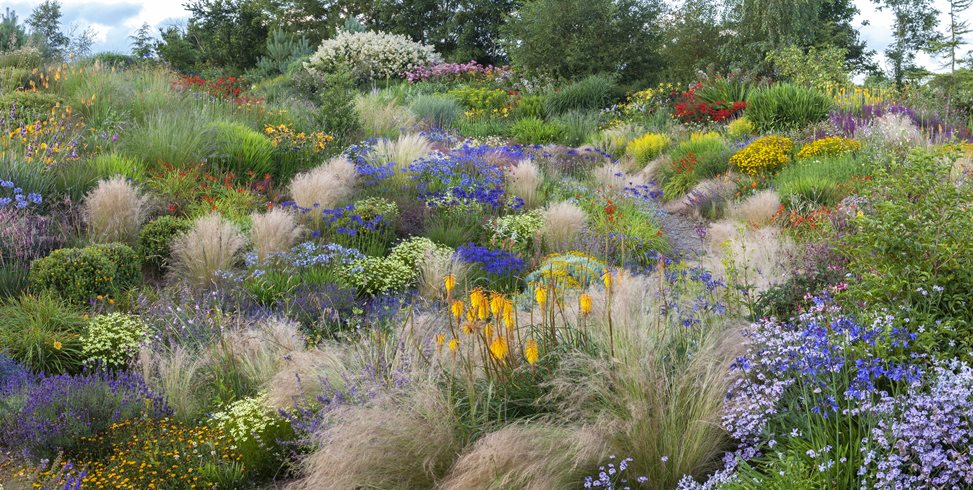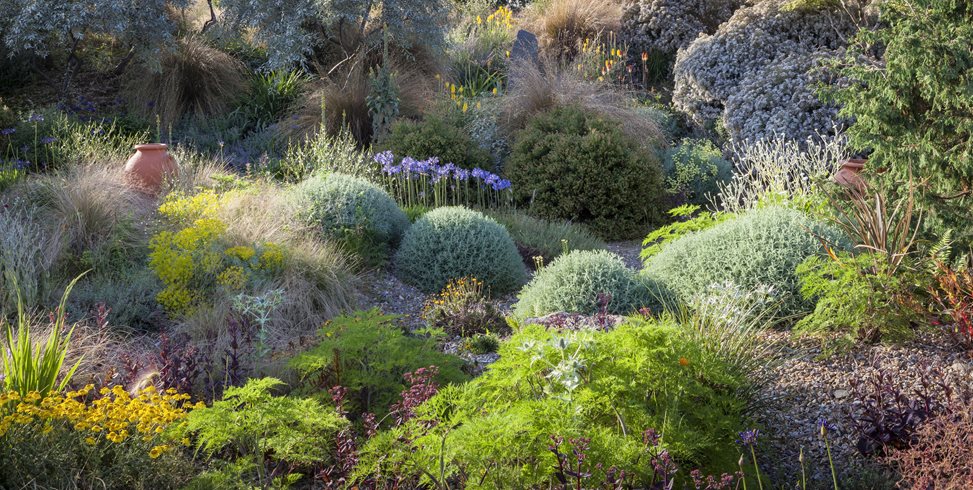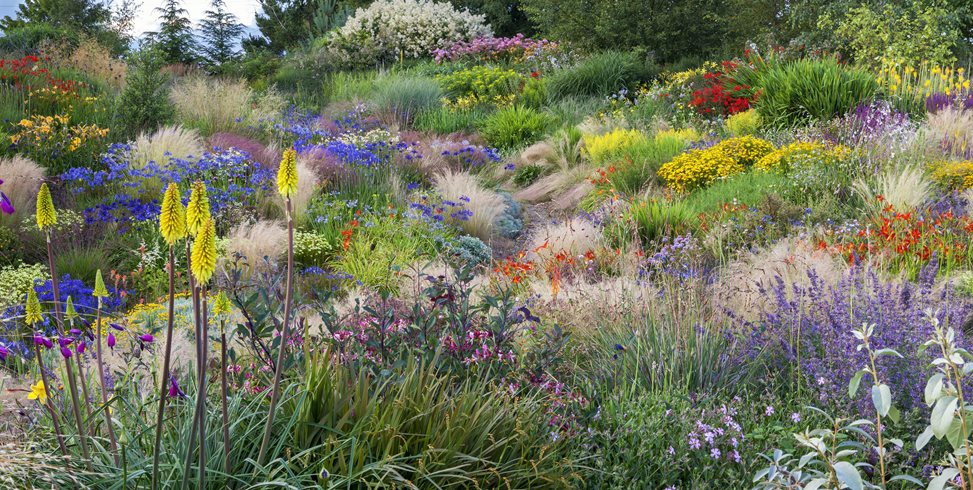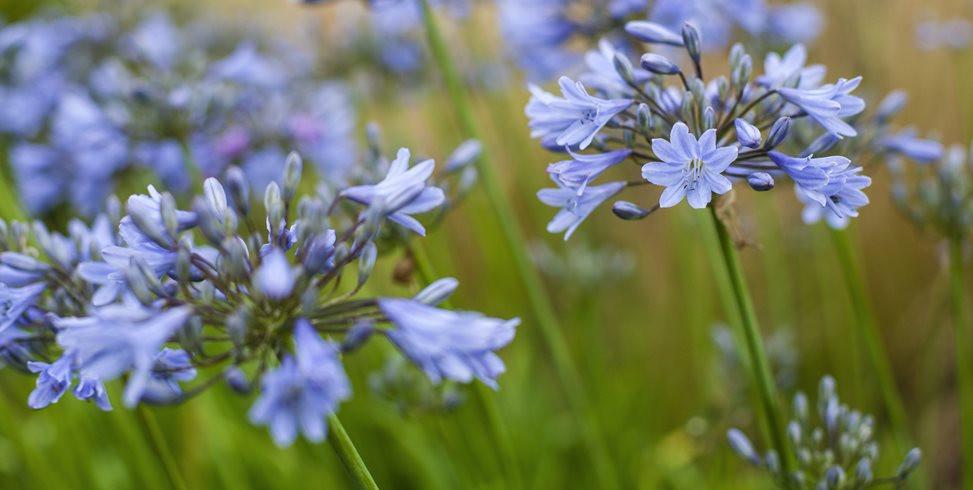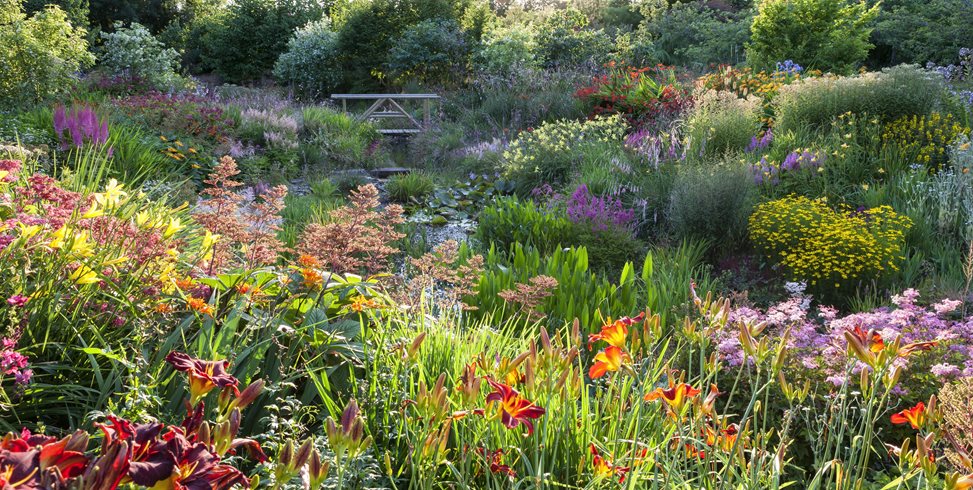HOW TO DESIGN A GARDEN THAT CELEBRATES SUMMER LIGHT
9 tips to help you put on a summer show with perennials, grasses, and mounding shrubsAlmost every garden has a sunny spot, but few are as colorful or well designed as Keith Wiley’s garden in Devon, England. With a palette of hot-colored plants, moving grasses, mounding shrubs, and scattered vertical perennials, this garden blooms all summer like a carefully composed fireworks show. The plantings peak in August as flowers burst into bloom and grasses sway in the breeze. Learn from Keith Wiley's planting wisdom with these nine tips for a colorful summer landscape:
- Evoke the sun. Even though his garden gets cool summers, its appearance brings a warm climate to mind. Many of its design elements are reminiscent of those in drier environments, in particular, the mound-like shapes. These forms create a restful backdrop for color and dramatic shapes.
- Repeat plants, colors, and shapes. The repetition of key plants, shapes, and colors provides a sense of calm and visual unity. Ideally, plants you repeat should have a long season, not look untidy after flowering, and be appropriate for the garden’s conditions. But don’t overdo it. Limit the number of different shapes and colors; it’s difficult to take in too much variety.
- Plant grasses for a little serendipity. Because they dominate so many open habitats, grasses tend to remind us of wild spaces and make sense as a foundation for any sun-drenched garden. The presence of grasses somehow tricks us into thinking it might have happened by itself. They also provide movement, even with the slightest breeze.
- Be precise with spikes. The occasional spiky shape, found in varieties of Kniphofia for example, add flair and contrast to the mounded shapes. Too many makes the plant combination look too busy.
- Use a subtle, pervasive theme. If you look closely, you can see that many of the mounding shapes of the plants on Wiley’s hillside are actually composed of linear leaves, reinforcing the feeling of a natural landscape. But their subtle appearance allows the eye to pay more attention to other elements.
- Play with color tones. The different blues of Agapanthus are effective—the same form repeated again and again, but with faint differences. They make an impact without dominating. “In a sunny spot, warm tones like yellows, oranges, and reds make the most of the light, especially during the golden hours when the sun rises and sets.”
- Hide your paths. There are paths crisscrossing this garden, but the combination of plants and terrain hides them, giving the illusion of looking across a continually planted space or naturally occurring habitat.
- Exploit opposites. Complementary colors—those on opposite sides of the color wheel—create juxtaposition. The combination of blue and yellow is fresh, lively, and summery. Learn more about Basic Design Principles—Using Color in the Garden.
- Add vibrant splashes. Occasional splashes of hot orange and red add a little thrill. As with variety of shape and color, practice restraint. Too many can feel tiring.
RELATED:
Landscape Design Principles for Residential Gardens
12 Plants for a Colorful Summer Garden
Summer Garden Tips
Originally appeared in the Summer 2016 issue of Garden Design Magazine.
